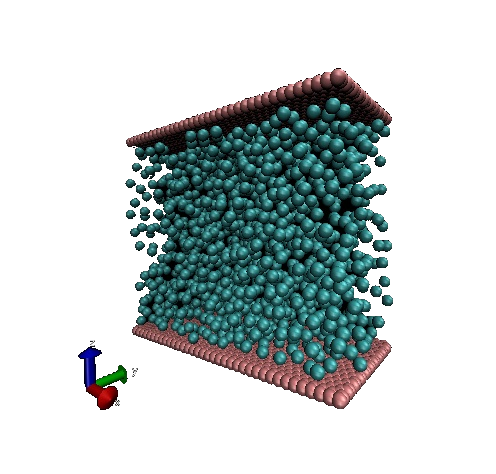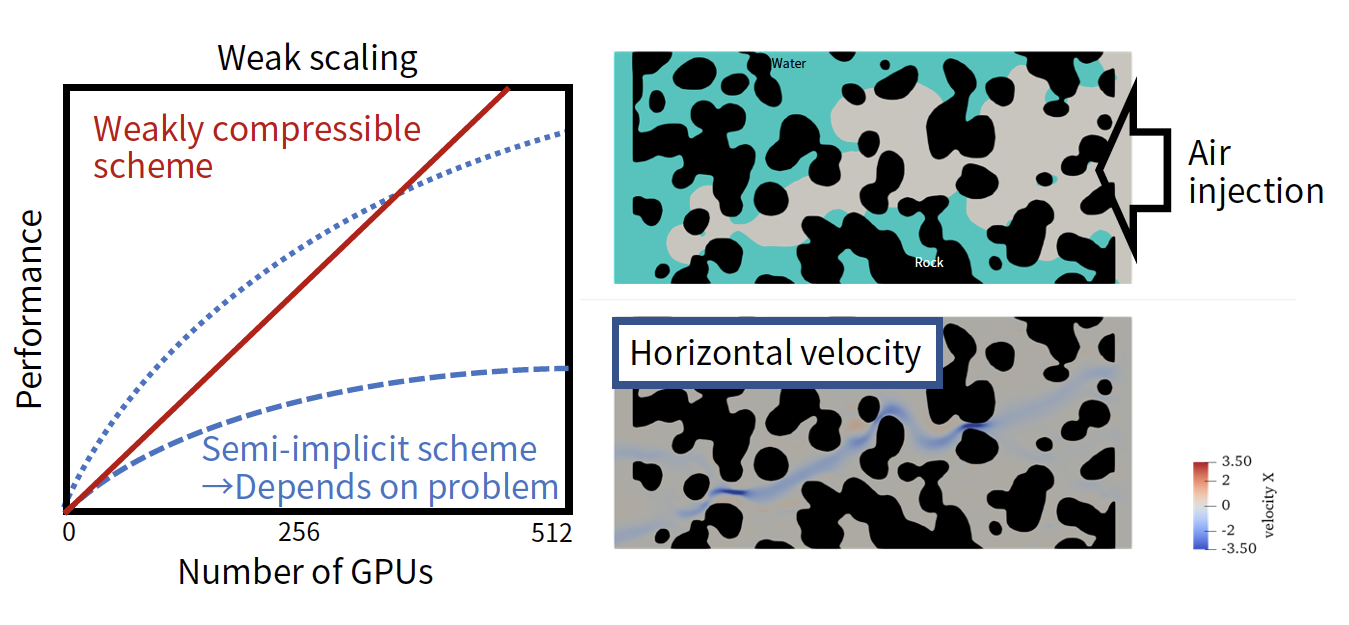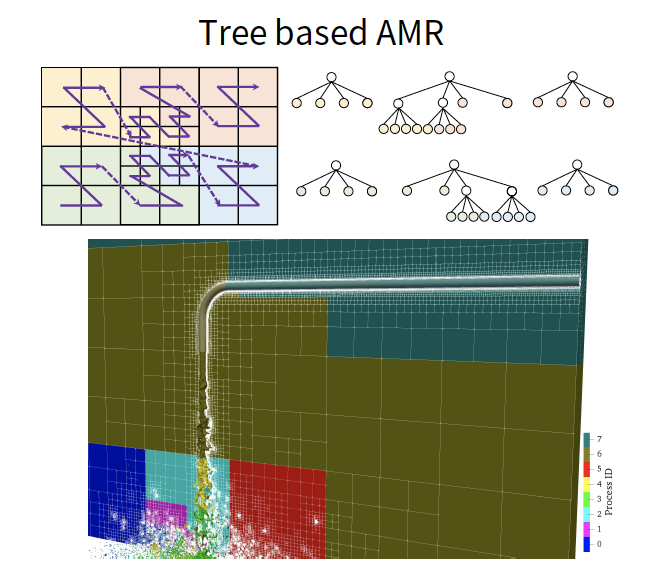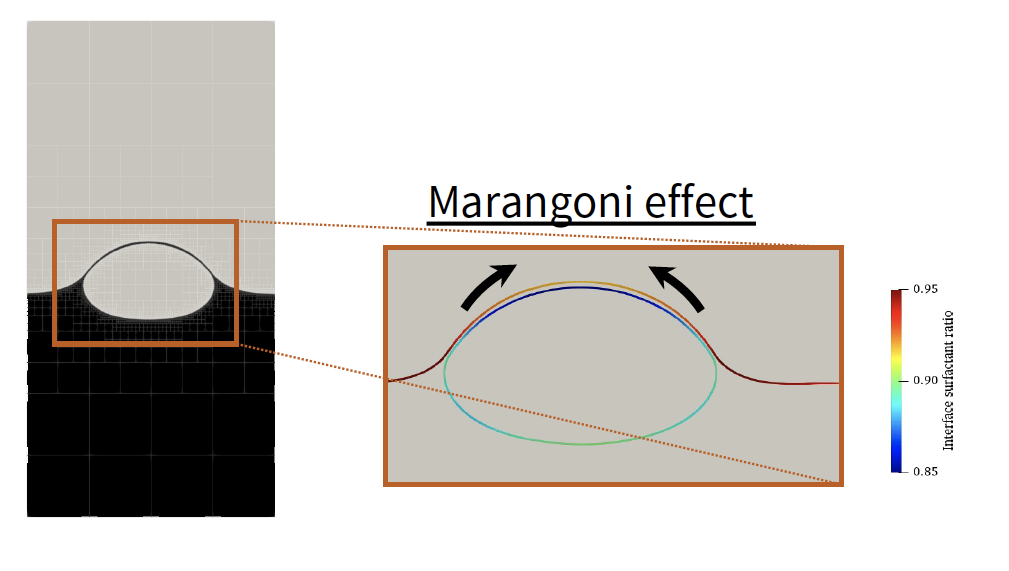RESEARCH TOPICS
ENHANCED OIL RECOVERY
We are facing an imminent energy crisis, and although our energy needs have increased, alternative energy sources have not been widely adopted. Fossil fuel continues to play an important role in our energy supply; however, its production is an inefficient process. During the primary production of oil and the application of water flooding, at least 50% of oil remains in the reservoir. Improving production efficiency is a key solution for overcoming the energy crisis.
Water imbibition during the water flooding process of oil production only sweeps part of the oil present. After water disrupts the oil continuity, most oil blobs are trapped in porous rock by interfacial tension. Developing a highly efficienct water flooding scheme is a difficult task; therefore, an understanding of the oil trapping mechanism in porous rock is necessary from a microscopic viewpoint.
The development of microfocused X-ray CT scanner technology enables the three-dimensional visualization of multiphase phenomena in a pore-scale. In this study, we scanned packed glass beads filled with a nonwetting phase (NWP) and an injected wetting phase (WP) in upward and downward injections in order to determine the microscopic mechanism of immiscible displacement in porous media and the effects of buoyancy forces. We observed the imbibition phenomena for very small capillary numbers in order to further understand the spontaneous imbibition mechanism in oil recovery. This study is one of the first attempts to use a microfocused X-ray CT scanner for observing the imbibition and trapping mechanisms.
The trapping mechanism in spontaneous imbibition is determined by the pore configuration causing imbibition speed differences in each channel; these differences can disrupt the oil continuity. Gravity plays an important role in spontaneous imbibition. In upward injection, the WP flows evenly and oil is trapped in single or small clusters of pores. In downward injection, the fingering phenomena determines the amount of trapped oil, which is usually in a network scale. Water breakthrough causes dramatic decrease in the oil extraction rate, resulting in lower oil production efficiency.
GEOLOGIC STORAGE OF CARBON DIOXIDE
The safety of geologic storage of CO2 is obviously a central concern in planning carbon sequestration on a large scale. The current concept of geologic storage involves the injection of CO2 into deep formations, which typically contain brine. CO2 will be retained by physical and geochemical mechanisms, such as physical trapping, capillary trapping, solubility trapping and mineralization.
We experimentally investigated the effect of capillarity, buoyancy, and viscosity ratio on NWP saturation after the drainage. By using micro-focused X-ray CT scanners, the drainage processes for a homogeneous glass beads pack or sand pack have been visualized at a pore scale for a supercritical CO2 and water system. The NWP saturation is modelled as a function of capillary number, Bond number, which represents the ratio of viscous sheer stress and buoyancy to interfacial tension, respectively, and the viscosity ratio.
Understanding of natural convection of miscible two phases in porous media is of great importance to problems of geological storage of carbon dioxide. We consider saltwater-freshwater fingering instabilities in a saturated porous medium. Plastic resin particles with an average diameter of 320 オm or 440 オm were packed 50 mm in height in a tube with the inter diameter of 32 mm. Development of the fingering due to instabilities and natural convection of freshwater and saltwater in porous media have been imaged by means of micro-focused X-ray computer tomography (CT) every three minutes. At early stages of convective mixing, ripples appear on the contour surface of the concentration of sodium iodine and grow to be fingers which extend vertically downwards with time. As fingers proceed downwards, the concentration of sodium iodine in fingers are reduced. As a result the convective mixing is rapidly suppressed. With an increase in the density difference and the permeability, the development of the natural convection occurs more quickly.
SHALE GAS
Natural gas is considered to be clean fuel because CO2, SOx and NOx emission from Natural gas are lower than other fuels. There are two types of natural gas, conventional natural gas and unconventional gas. Although conventional natural gas easy to produce from gas field, the amount is limited. On the other hand, unconventional natural gas exists widely in the ground, and the amount of unconventional gas much higher than that of conventional natural gas. Especially shale gas, which is stored in shale stratum, has been developed and the amount of the produced gas has been increasing these days. However, there are many unknown points about shale gas production process in porosities of source rock. This paper will shed lights on how methane molecules which is major proportion of shale gas flows in the porosities by means of MD method.
RENEWABLE ENERGY
Recently, microalgae receive much attention as source of bio-diesel oil production, because of high growth rate and huge amount of yield per unit area. We proposed a combined system which retrofits to conventional coal-fired power plant to remove CO2 by means of microalgae. The study objective was to conduct an analysis of the hybrid systems in which power-plant flue gas serves CO2 to cultivate microalgae and harvested microalgae serves heat to reduce coal consumption. One system uses amines as CO2 stripper from flue gas and the other system uses water. Preliminary experimental results show spraying water removes 54 % of CO2 from flue gas at the concentration of 15 %. System analysis was conducted based on experimental data. In case of the water spraying system water management at low energy consumption is mandatory to improve total efficiency because of huge volume of water comparing to heat value of harvested microalgae. The estimated area of a cultivation pond which utilizes CO2 emitted from a 1000 MW-coal-fired power plant is about 339 km2. Improvement in the CO2 emission and coal consumption per unit power output can be detected at low height of the spay tower.
Large-scale multi-phase flow simulations
In computational fluid dynamics (CFD) simulations, where stencil calculations of grid systems are performed, memory access takes more time than computation. High performance can be achieved by using an accelerator with a wide memory bandwidth such as a GPU. However, the semi-implicit method for solving the pressure Poisson equation suffers from problem-dependent scaling problems. We have developed a computational method that allows weak compressibility in the framework of the finite difference method and the finite volume method and have achieved ideal problem-independent scaling. Compared with the lattice Boltzmann method, which has attracted attention in recent years as a method that allows for weak compressibility, the proposed method has the advantage of being stable even under numerically severe conditions (high-density ratio, intense flow, etc.). We are continuing to improve the simulation method from various aspects, such as applying the finite volume method and the gradient limitation to ensure the conservation of momentum and numerical stability, the improvement of the gas-liquid interface capture method, and the handling of complex boundaries.
Interface-adapted AMR method
The total number of grid points increases by 8 when the grid spacing is halved in 3D space. The AMR (Adaptive Mesh Refinement) method, which uses high-resolution meshes only where necessary, has been proposed to reduce the number of meshes. The AMR method has been proposed since the 1980s, but few practical examples have been reported due to its implementation and numerical difficulties. The developed weakly compressible gas-liquid two-phase flow method does not need to solve the pressure Poisson equation. It is not hampered by the poor convergence of the Poisson equation due to the resolution difference. Implementing the AMR method for dynamic domain decomposition on multiple GPUs is challenging and has rarely been done, but we have developed the code from scratch and achieved good scaling. Since the air-liquid interface moves from moment to moment, it is necessary to adapt the subdivision grid dynamically when multiple GPUs are used. Using the developed code, we are conducting a real-scale analysis of the analysis targets required in the industry.
Complex multi-phase flow simulation with surfactant and viscoelastic effects
With the realization of high-resolution gas-liquid two-phase flow calculations, flows including thin liquid films, which have been challenging to resolve in the past, are now being analyzed in grid system calculations.
Surfactants and viscoelastic effects affect the dynamics of gas-liquid interfaces, including thin films, and we are attempting to model these effects and combine them with fluid calculations.
In particular, the Marangoni effect, which is caused by the surface tension lowering effect of surfactants, significantly impacts the dynamics of liquid films.
In order to improve the recovery efficiency of residual oil in porous media, we are experimentally injecting surfactant-containing fluids, foam-like fluids, and viscoelastic fluids such as polymers. We are studying to establish a method to clarify the physics of multiphase flow caused by such complex fluid behavior by numerical simulation.
Multi-phase flow simulation in porous media
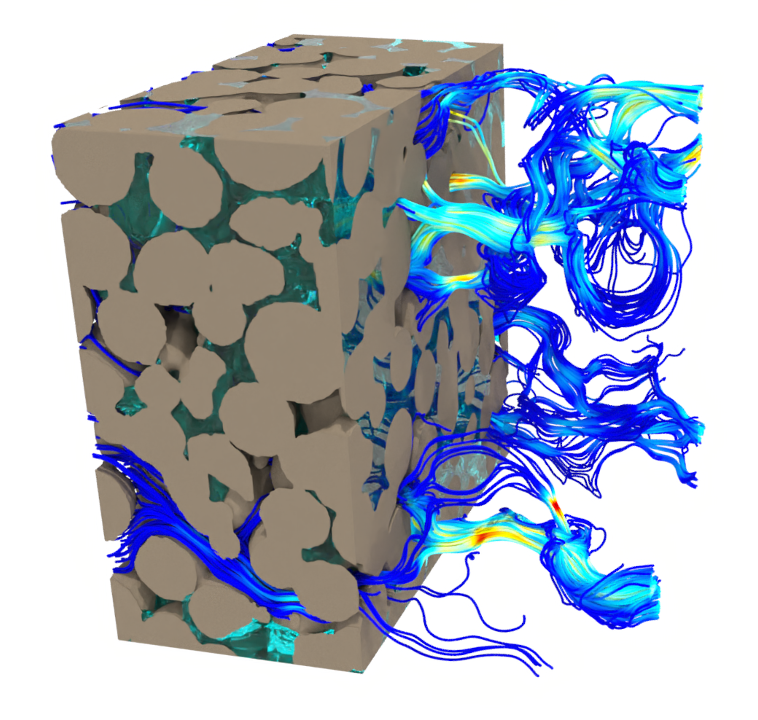 Simulation of air injection into an water-filled porous media. Streamlines and each phase are shown.
Simulation of air injection into an water-filled porous media. Streamlines and each phase are shown.
There is a concept called digital rock physics, which is an approach to obtaining critical information, such as the relative permeability coefficient of porous media from high-precision fluid simulations using geometry data obtained from X-ray CT images.
In experiments, porous material properties can be obtained at a cost on the order of one month using rock cores obtained from borehole investigations, etc.
Numerical calculations can be performed using arbitrary porous geometries, allowing the extraction of porous properties from rock fragments in shorter time than experiment.
Compared to experiments, numerical calculations save time and economic costs, provide spatial data such as pressure and velocity distributions, and are a powerful tool for studying effective injection schemes and property values.
Multiphase flow calculations using the weakly compressible method have the advantage of high numerical stability even in the presence of local pseudo-velocities such as spurious currents. They can be performed under actual flow conditions in porous media.
We have demonstrated that the method can be applied to low-capillary-number flows and high-density-ratio calculations, which were previously difficult to perform. We have also obtained relative permeability coefficients by applying the method with high numerical stability while being suitable for large-scale calculations.



